Your cart is currently empty!
Blog
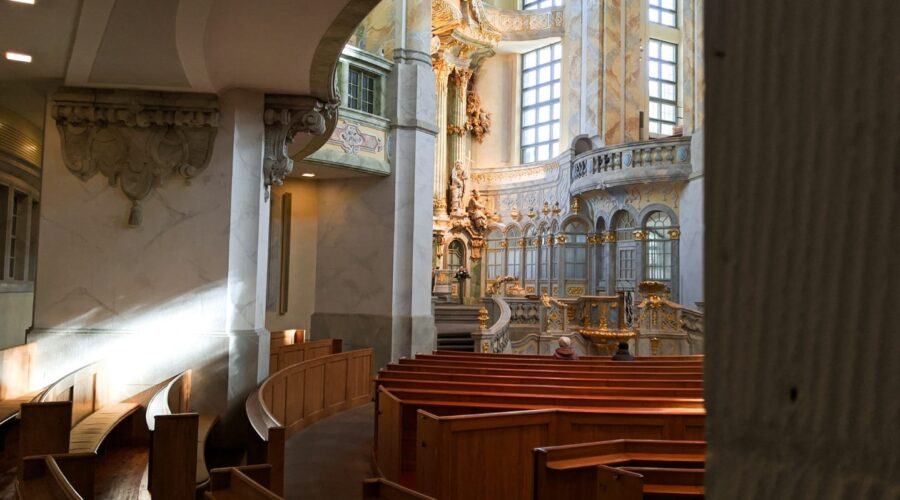
Unveiling the Architectural Marvel: Saint Sophia
Origins and Architectural Grandeur
Saint Sophia, the iconic Byzantine masterpiece, stands proudly in the heart of Istanbul. Its construction, commissioned by Emperor Justinian I in the 6th century, was an architectural marvel that pushed the boundaries of engineering and design. The massive dome, measuring over 100 feet in diameter, was a testament to the skill and ambition of its creators. Supported by a complex system of arches and vaults, the dome soars high above, creating a sense of awe and grandeur.
Function and Influence
Saint Sophia served as the grand cathedral of the Eastern Orthodox Church for over 900 years, witnessing countless religious ceremonies and theological debates. Its monumental scale and intricate ornamentation became the epitome of Byzantine architectural style. The church’s design influenced countless later structures, including the Hagia Sophia in Thessaloniki, Greece, and the Cathedral of Saint Basil in Moscow.
Conversion to Mosque
Following the Ottoman conquest of Constantinople in 1453, Saint Sophia was converted into a mosque. The interior was modified with the addition of a minaret and a mihrab facing Mecca. The mosaics depicting Christian figures were covered or destroyed, replaced by Quranic inscriptions and Islamic calligraphy. For centuries, Saint Sophia remained a prominent center of Islamic worship.
Secularization as a Museum
In 1934, Turkey’s first president, Mustafa Kemal Atatürk, secularized the building and transformed it into a museum. This decision aimed to preserve Saint Sophia’s historical and cultural significance for future generations. Today, the museum attracts countless visitors who marvel at its architectural beauty and witness the fusion of Christianity and Islam within its walls.
Architectural Highlights
- Massive Dome: The crowning glory of Saint Sophia, the dome rests on a series of 40 windows (called oculi), allowing ample natural light to flood the interior.
- Soaring Arches: The dome is supported by massive pointed arches, which create an illusion of height and space.
- Pendentives: The transition from the rectangular base to the circular dome is made possible by pendentives, triangular segments that form the dome’s base.
- Intricate Mosaics: While some mosaics were destroyed during the conversion to a mosque, remnants of stunning Byzantine mosaics depicting scenes from the Bible and the lives of saints can still be seen.
- Minaret: The slender minaret, added during the Ottoman period, provides panoramic views of Istanbul.
Visiting Saint Sophia
Saint Sophia is a popular tourist destination, and visitors are advised to book their tickets online or arrive early to avoid long queues. Guided tours are available, providing insights into the building’s history and architectural wonders. The museum is open daily, except for Mondays.
Historical Significance
Saint Sophia holds immense historical significance as a witness to the rise and fall of empires. It was the epicenter of the Eastern Orthodox Church for centuries, and its conversion into a mosque symbolized the Ottoman conquest. Today, as a museum, it serves as a testament to Istanbul’s rich cultural and architectural heritage.
Conclusion
Saint Sophia stands as a testament to the ingenuity and creativity of its creators. Its grand dome, soaring arches, and intricate mosaics have inspired generations of architects and artists. Through its transformation from cathedral to mosque to museum, Saint Sophia embodies the rich tapestry of history and culture that has shaped Istanbul and the world.
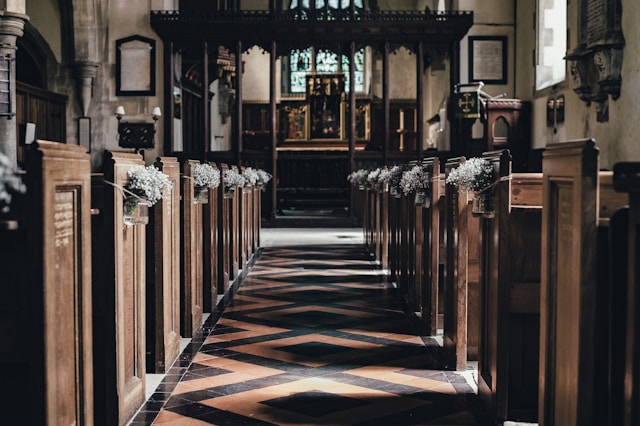
My Catholic Life: A Journey of Faith and Community
Introduction
Embracing the Catholic faith has been a transformative experience that has shaped my life in profound ways. As a practicing Catholic, I have found solace, guidance, and a deep sense of belonging within the Church community. In this blog, I will share my personal journey and insights into the rich tapestry of Catholic life, exploring its teachings, traditions, and the transformative impact it has had on me.
The Pillars of Catholic Faith
The Holy Trinity
At the heart of Catholicism lies the belief in the Holy Trinity: God the Father, God the Son (Jesus Christ), and God the Holy Spirit. This central dogma teaches that God is one yet exists in three distinct persons, each with their unique roles and attributes.
Revelation and Scripture
Catholics believe that God has revealed Himself through Scripture and Tradition. The Bible, consisting of the Old and New Testaments, is considered the inspired word of God and contains divine truths and moral teachings. Tradition encompasses the teachings, practices, and beliefs that have been handed down from the early Church.
The Seven Sacraments
The Church recognizes seven sacraments as outward signs of God’s grace and love: Baptism, Confirmation, Eucharist, Penance, Anointing of the Sick, Holy Orders, and Matrimony. These sacraments play a vital role in a Catholic’s spiritual life, providing opportunities for forgiveness, growth, and strengthening of faith.
Baptism
Baptism, the first sacrament, marks one’s entry into the Catholic Church and the washing away of original sin. Through Baptism, we become members of the Body of Christ and receive the Holy Spirit.
Eucharist
The Eucharist, also known as Holy Communion, is a central sacrament in the Catholic faith. Believed to be the true presence of Christ in the form of consecrated bread and wine, Catholics partake in the Eucharist to receive spiritual nourishment and strengthen their relationship with God.
Penance
The Sacrament of Penance, also known as Confession, provides an opportunity for Catholics to seek forgiveness for sins committed after Baptism. Through the act of repentance, examination of conscience, and absolution by a priest, individuals can reconcile with God and experience the joy of forgiveness.
Devotional Practices
In addition to the sacraments, Catholicism encourages various devotional practices that deepen one’s connection to God and the Church.
Prayer
Prayer is a cornerstone of Catholic life, offering opportunities for communication with God. Catholics engage in various forms of prayer, including personal devotions, liturgical prayer during the Mass, and the Rosary, a meditative prayer centered around the life of Christ.
Pilgrimages
Throughout history, Catholics have embarked on pilgrimages to holy sites, such as the Vatican, Lourdes, and Fatima. These journeys are often undertaken for spiritual renewal, penance, and to seek the intercession of saints.
The Liturgy
The liturgy, especially the Mass, is a pivotal element of Catholic worship. The Mass is a reenactment of the Last Supper and celebrates the sacrifice of Christ on the cross. It involves prayers, readings, homilies, and the reception of the Eucharist.
The Church Community
Beyond its theological teachings, the Catholic Church is a thriving community that fosters fellowship, support, and service.
Parish Life
Parishes are local communities within the Church where Catholics gather for worship, education, and fellowship. They provide a sense of belonging and opportunities to connect with other believers.
Catholic Organizations
Numerous Catholic organizations exist to cater to specific needs and interests. These organizations, such as the Knights of Columbus, Catholic Charities, and youth groups, offer opportunities for spiritual enrichment, community service, and personal growth.
Conclusion
My Catholic life has been a profound and fulfilling journey. Through the teachings of the faith, participation in the sacraments, devotional practices, and the support of the Church community, I have grown spiritually, found meaning in my life, and experienced the love and mercy of God. As I continue on this path, I am grateful for the guidance and joy that the Catholic faith brings into my life.
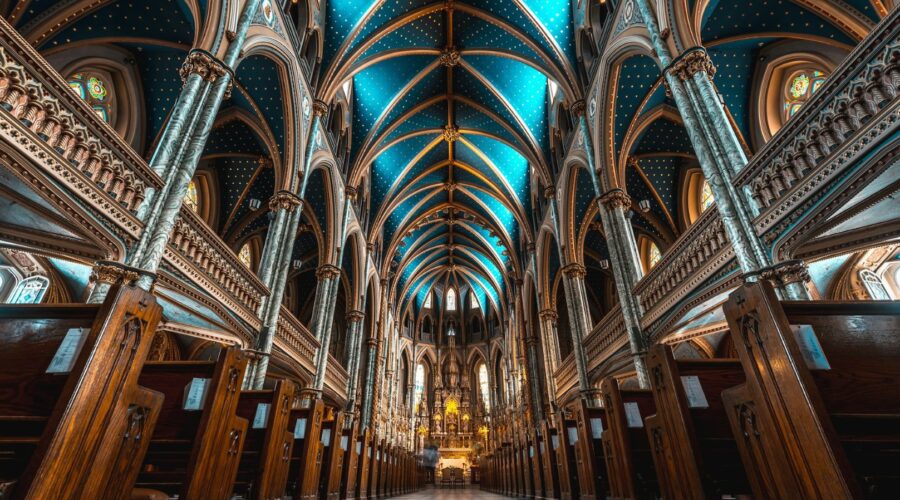
Saint Francis of Assisi: A Beacon of Love, Compassion, and Humility
Early Life and Conversion
Giovanni Francesco di Bernardone was born in Assisi, Italy, in 1181 or 1182, to a wealthy merchant family. As a young man, Francis lived a carefree and extravagant life until a profound spiritual awakening transformed him. In 1205, while meditating in the countryside, he heard a voice commanding him to “rebuild my Church, which is falling into ruin.”
Francis interpreted this as a call to restore the crumbling San Damiano Church. However, his lavish spending on the project alienated his father, who disowned him. Undeterred, Francis embraced a life of poverty and humility, renouncing all his worldly possessions.
Founding the Franciscan Order
In 1209, Francis founded the Order of Friars Minor, commonly known as the Franciscans. The order’s mission was to follow Christ’s teachings by living in poverty, chastity, and obedience. Members of the order were encouraged to preach, care for the sick and needy, and live in harmony with nature.
Francis’s emphasis on simplicity and service resonated with people from all walks of life, and the Franciscan Order grew rapidly. Francis also established the Order of Poor Clares, a women’s religious order founded by Saint Clare of Assisi.
Love of God and Creation
Francis had an unwavering love for God and all of creation. He believed that everything in nature was interconnected and should be treated with respect and reverence. Francis often preached to animals, and many legends depict his ability to communicate with them.
He also established the practice of the “crib,” a Nativity scene where people could gather to reflect on the birth of Christ. Francis’s love for God and nature inspired the creation of the Christmas carol “Silent Night,” which references “the lowly cattle shed” where Jesus was born.
Miracles and Stigmata
Francis is known for numerous miracles attributed to him, including healing the sick, casting out demons, and controlling wild animals. The most famous miracle is the reception of the stigmata, the wounds of Christ, which Francis received in a vision in 1224.
These wounds were visible on Francis’s hands, feet, and side until his death. The stigmata are considered a sign of Francis’s deep love for Christ and his desire to share in His suffering.
Legacy and Influence
Francis of Assisi died in 1226 and was canonized two years later. He is considered one of the most influential saints in Christian history. His teachings on poverty, humility, and service have inspired countless people throughout the centuries.
- Franciscan Orders: The Franciscan Order and the Order of Poor Clares remain active today, providing service to the poor, sick, and marginalized.
- Environmentalism: Francis’s love of nature has made him a patron saint of ecology and environmentalism.
- Peace and Social Justice: Francis’s message of love and compassion has inspired peace movements and campaigns for social justice.
Saint Francis of Assisi continues to be a beacon of hope and inspiration for people of all faiths and walks of life. His teachings serve as a timeless reminder of the importance of love, humility, and service to others.
Additional Resources
Franciscan Media
Franciscan Order USAKey Aspects of Saint Francis of Assisi Summary Early Life Born into a wealthy family, converted to a life of poverty after a spiritual awakening. Franciscan Order Founded the Order of Friars Minor (Franciscans) and the Order of Poor Clares, emphasizing poverty, chastity, and obedience. Love of God and Creation Believed in the interconnectedness of all things, preached to animals, and established the “crib” tradition. Miracles and Stigmata Attributed with numerous miracles, including the reception of the stigmata (wounds of Christ). Legacy and Influence One of the most influential saints in Christian history, inspiring Franciscan Orders, environmentalism, and peace movements. 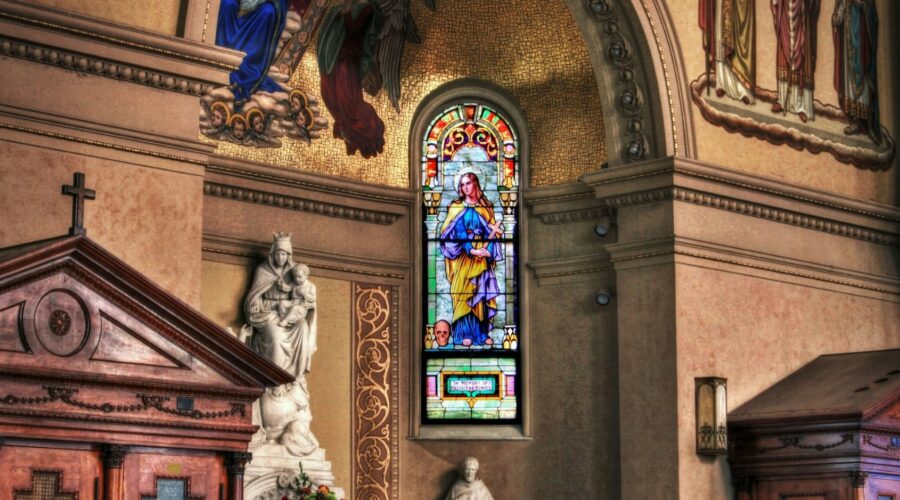
The Bridge Church: Connecting the Gap Between Religion and Spirit
“`html
Introduction
The Bridge Church is a vibrant and welcoming community that seeks to bridge the gap between religion and spirit. We believe that there is a universal truth that transcends all religious traditions, and we strive to create a space where people from all backgrounds can come together to explore and experience that truth.
Our Mission
Our mission is to help people develop a deeper connection with their own spirituality and with each other. We do this by providing a variety of programs and services, including:
- Weekly worship services
- Meditation and mindfulness classes
- Spiritual growth workshops
- Youth and children’s programs
- Community outreach initiatives
Our Beliefs
We believe in the following:
- There is a universal truth that transcends all religious traditions. This truth is often referred to as God, the Divine, or the Absolute.
- All people are capable of experiencing this truth for themselves. We do not believe that any one religion or spiritual practice has a monopoly on the truth.
- The best way to experience this truth is through direct experience. This can be done through meditation, prayer, or other forms of spiritual practice.
- We are all interconnected. We are all part of a larger web of life, and our actions affect not only ourselves but also the world around us.
Our Community
The Bridge Church is a diverse and inclusive community. We welcome people of all races, religions, sexual orientations, gender identities, and socioeconomic backgrounds. We believe that everyone has something to offer, and we strive to create a space where all voices are heard and respected.
How to Get Involved
If you are interested in learning more about the Bridge Church, we invite you to visit our website or attend one of our services. We would be happy to answer any questions you have and help you get connected with our community.
Contact Information
The Bridge Church
123 Main Street
Anytown, CA 12345
(123) 456-7890
www.thebridgechurch.org“`
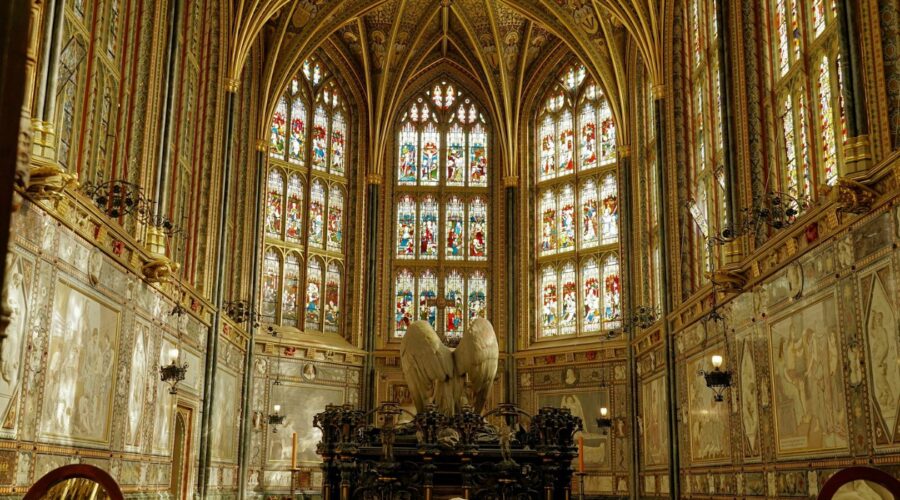
Unveiling the Word of Life Church: A Comprehensive Guide
Introduction
The Word of Life Church, a burgeoning global religious movement, has captivated the hearts and minds of millions worldwide. This blog post ventures into the depths of the Word of Life Church, exploring its history, beliefs, practices, and controversies. Whether you’re a curious seeker, a devoted follower, or simply interested in the intricacies of religious phenomena, this comprehensive guide will shed light on this multifaceted organization.
History of the Word of Life Church
Inception and Growth
The Word of Life Church traces its origins to 1956, when Jack Wyrtzen, a former Pentecostal minister, established a small congregation in Uppsala, Sweden. Driven by a passion for evangelism, Wyrtzen and his team spread the gospel throughout Scandinavia, attracting a growing following. In the decades that followed, the church expanded its reach, establishing branches across Europe and beyond.
Leadership and Succession
Jack Wyrtzen served as the church’s leader until his passing in 2003. Upon his death, his son, Robert Wyrtzen, assumed the mantle of General Overseer, continuing the church’s mission and growth trajectory. Under Robert Wyrtzen’s leadership, the Word of Life Church has expanded its global presence, reaching over 100 countries.
Beliefs and Principles
The Word of Life Church adheres to a conservative evangelical doctrine, emphasizing the authority of the Bible, the deity of Jesus Christ, and the need for personal salvation through faith. Key beliefs include:
- Sola Scriptura: The belief that the Bible is the sole source of divine authority and is to be interpreted literally.
- Biblical Inerrancy: The belief that the Bible is without error in its original manuscripts.
- Dispensationalism: The belief that history is divided into distinct dispensations, or periods, each with its own unique purpose.
- Predestination: The belief that God has chosen certain individuals for salvation, regardless of their actions.
- Rapture: The belief that Christ will return to earth to take his followers to heaven, before the Tribulation period.
Practices and Programs
Worship Services
Word of Life Church worship services are characterized by lively music, passionate preaching, and an emphasis on personal testimony. Services typically include prayer, Bible study, and opportunities for giving and fellowship.
Evangelism and Outreach
Evangelism is a central pillar of the Word of Life Church. Members are encouraged to share their faith with others through personal witnessing, public events, and international missions. The church also runs various outreach programs, such as feeding the homeless and providing support to underprivileged communities.
Education and Discipleship
The Word of Life Church places great importance on education and discipleship. It operates Bible schools, seminaries, and training programs to equip members with biblical knowledge and leadership skills. Members are encouraged to grow in their faith through regular Bible study, small group meetings, and mentoring relationships.
Controversies and Criticism
The Word of Life Church has not been immune to controversy and criticism over the years. Some concerns raised include:
- Strict Discipline: Critics have alleged that the church maintains a rigid and authoritarian leadership structure, which can result in excessive control over members’ personal lives.
- Allegations of Financial Mismanagement: There have been accusations of financial improprieties within the church, including questionable use of funds and excessive salaries for leaders.
- Restricting Access to Information: Some former members have claimed that the church limits members’ access to outside information that might challenge its teachings or practices.
Conclusion
The Word of Life Church remains a vibrant and influential religious organization with a vast global reach. Its unwavering belief in the authority of Scripture, emphasis on evangelism, and commitment to education have shaped the lives of millions. While controversies and criticisms have arisen over the years, the church continues to draw followers who find solace, guidance, and purpose within its walls.
Understanding the Word of Life Church requires a multifaceted approach, encompassing its history, beliefs, practices, and the controversies that surround it. This comprehensive guide has delved into the depths of this religious movement, providing readers with a clear and accessible overview of its key aspects.
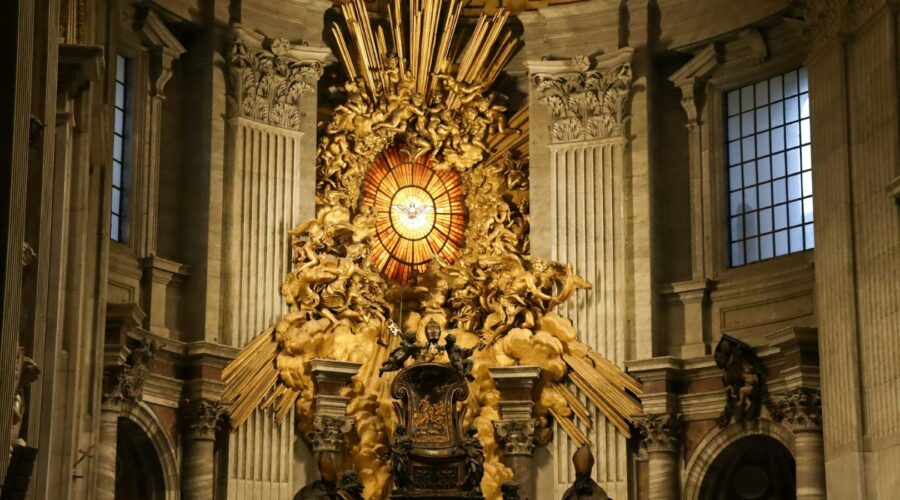
World Outreach Church: A Global Impact for Christ
Introduction
World Outreach Church (WOC) is an international, non-denominational Christian megachurch headquartered in Murfreesboro, Tennessee. Led by Pastor Allen Jackson, WOC has a mission to spread the gospel and make disciples around the world.
History and Impact
Established in 1985, WOC has grown exponentially over the years, with over 250,000 members in over 100 countries. The church’s impact extends beyond its physical locations.
Mission Work
WOC is heavily involved in mission work, supporting over 2,000 missionaries in more than 120 countries. Through its outreaches, the church provides medical care, education, and humanitarian aid to communities in need.
Church Planting
WOC places a strong emphasis on church planting, with over 3,000 churches established globally. The church provides training, resources, and support to new churches, helping them to become self-sustaining and impactful in their communities.
Leadership Development
WOC is committed to developing future leaders, offering a variety of programs and training opportunities. Through its leadership academy, the church equips individuals with the skills and knowledge to serve in the church and beyond.
Unique Features
WOC distinguishes itself from other churches in several ways:
24-Hour Worship Service
The church’s flagship campus in Murfreesboro hosts a 24-hour worship service, allowing members and visitors to worship at any time of the day or night.
Global Campus
WOC’s Global Campus offers online courses, seminars, and discipleship programs, making the church’s teachings and resources accessible worldwide.
Partnerships and Collaborations
WOC collaborates with a wide range of organizations, including other churches, parachurch ministries, and humanitarian agencies. These partnerships enhance the church’s outreach and impact.
Leadership and Structure
Pastor Allen Jackson serves as the Senior Pastor of World Outreach Church. He is supported by a team of associate pastors and elders who oversee the various ministries and functions of the church.
WOC operates under a decentralized structure, with each campus having its own leadership team and autonomy in decision-making. However, the church maintains a strong sense of unity and alignment with the overall mission and vision.
Membership and Community
Becoming a member of WOC involves completing a membership class, which provides an overview of the church’s beliefs, values, and expectations. The church offers various opportunities for fellowship, including small groups, Bible studies, and community events.
Outreach and Service
WOC encourages its members to be active in outreach and service. The church organizes regular community outreach initiatives, such as food drives, clothing distributions, and volunteer projects.
Worship and Music
Worship is central to the life of WOC. The church’s worship services feature contemporary music, prayer, and preaching. WOC has its own music ministry, which produces original music and facilitates worship experiences.
Challenges and Opportunities
Like any organization, WOC faces challenges and opportunities:
Global Expansion
Expanding globally presents logistical and cultural challenges. However, it also provides the church with the opportunity to reach new audiences and make a greater impact.
Cultural Sensitivity
Operating in a multicultural world requires sensitivity to different cultural norms and perspectives. WOC strives to adapt its outreach and ministries to effectively engage people from diverse backgrounds.
Technological Advancements
The rapid pace of technological advancements offers opportunities for the church to enhance its communication, outreach, and discipleship efforts. WOC embraces new technologies to reach people in innovative ways.
Conclusion
World Outreach Church is a global force for good, transforming lives and communities through its unwavering commitment to the gospel of Jesus Christ. With its innovative programs, global reach, and emphasis on leadership development, WOC continues to make a significant impact on the world stage.
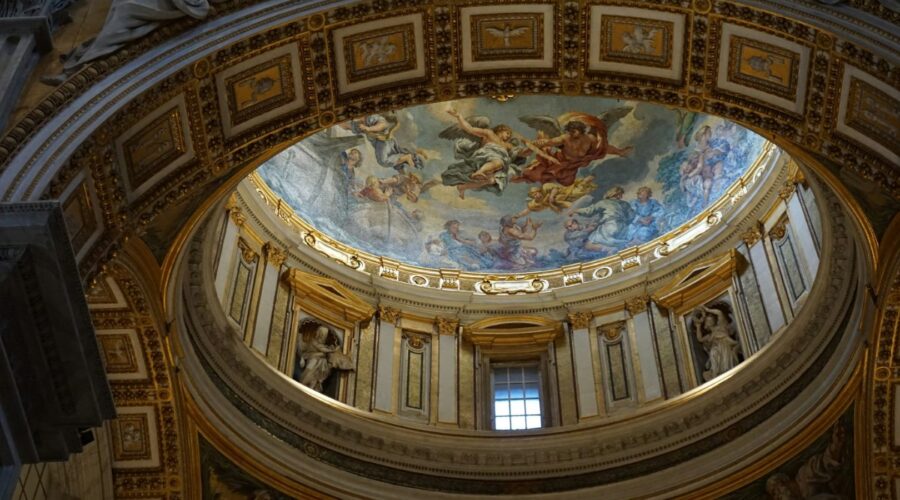
Psalm 91 NKJV: A Comprehensive Guide to Understanding God’s Protection
Introduction
Psalm 91 is a beautiful and powerful psalm that speaks of God’s protection over those who trust in Him. It is a psalm of comfort and reassurance, and it can be a source of great strength and encouragement during difficult times.
This blog post will provide a comprehensive guide to understanding Psalm 91 NKJV. We will explore the meaning of each verse, and we will discuss how we can apply the truths of this psalm to our own lives.
The Meaning of Psalm 91
Psalm 91 can be divided into three main sections:
- Verses 1-8: These verses speak of the protection that God provides for those who dwell in His secret place.
- Verses 9-13: These verses describe the specific ways in which God protects His people.
- Verses 14-16: These verses conclude the psalm with a promise of God’s deliverance and eternal life for those who love and obey Him.
Here is a brief summary of the meaning of each verse:
Verse Meaning 1 Those who dwell in the secret place of the Most High shall abide under the shadow of the Almighty. 2 I will say of the Lord, “He is my refuge and my fortress; My God, in Him I will trust.” 3 Surely He shall deliver you from the snare of the fowler And from the perilous pestilence. 4 He shall cover you with His feathers, And under His wings you shall take refuge; His truth shall be your shield and buckler. 5 You shall not be afraid of the terror by night, Nor of the arrow that flies by day, 6 Nor of the pestilence that walks in darkness, Nor of the destruction that lays waste at noonday. 7 A thousand may fall at your side, And ten thousand at your right hand; But it shall not come near you. 8 Only with your eyes shall you look, And see the reward of the wicked. 9 Because you have made the Lord, who is my refuge, Even the Most High, your dwelling place, 10 No evil shall befall you, Nor shall any plague come near your dwelling. 11 For He shall give His angels charge over you, To keep you in all your ways. 12 In their hands they shall bear you up, Lest you dash your foot against a stone. 13 You shall tread upon the lion and the cobra, The young lion and the serpent you shall trample underfoot. 14 “Because he has set his love upon Me, therefore I will deliver him; I will set him on high, because he has known My name. 15 He shall call upon Me, and I will answer him; I will be with him in trouble; I will deliver him and honor him. 16 With long life I will satisfy him, And show him My salvation.” Applying the Truths of Psalm 91 to Our Lives
The truths of Psalm 91 can be applied to our lives in many ways. Here are a few examples:
- We can find refuge in God during difficult times. When we are facing challenges, we can turn to God for strength and protection. He will never leave us or forsake us.
- We can trust in God’s deliverance. God is faithful to deliver His people from harm. He will always be there for us, even when we are facing the most difficult circumstances.
- We can have victory over our enemies. God is greater than any enemy we may face. He will give us the strength to overcome any obstacle.
- We can live a long and prosperous life. God desires to bless His people with long life and prosperity. If we love and obey Him, He will fulfill His promises to us.
Conclusion
Psalm 91 is a powerful reminder of God’s love and protection for His people. When we dwell in His secret place, we can be assured that we are safe from any harm. Let us all strive to live our lives in accordance with the truths of this psalm, and let us experience the full measure of God’s blessing.
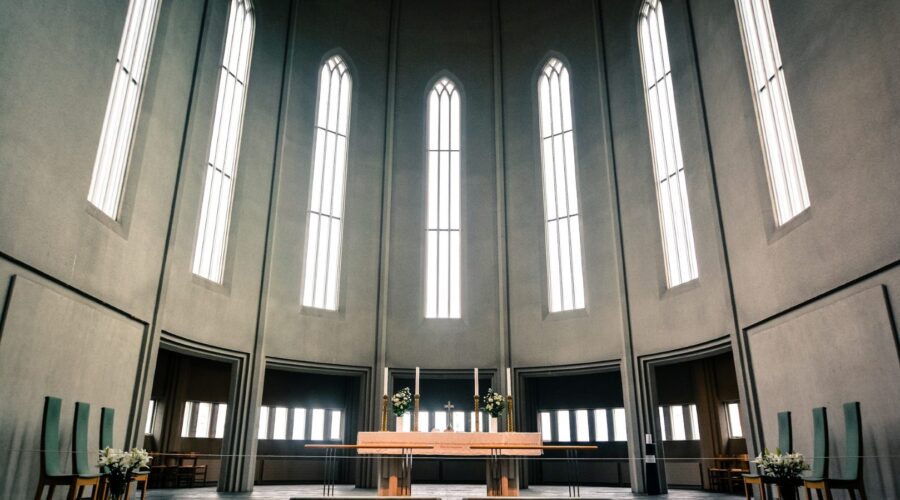
Discover the Rich History and Welcoming Community of Hope Lutheran Church
Hope Lutheran Church: A Legacy of Faith and Service
Nestled in the heart of vibrant community, Hope Lutheran Church stands as a beacon of faith, fellowship, and service. With a rich history spanning over a century, the church has played an integral role in shaping the spiritual and cultural landscape of the region.
Founded in 1906 by a group of dedicated German immigrants, Hope Lutheran Church began as a small congregation gathering in private homes. Through the years, the church has experienced steady growth and expansion, reflecting the unwavering commitment of its members.
Our Mission Statement
Hope Lutheran Church exists to “proclaim the gospel, serve our community, and make disciples of Jesus Christ.” This mission encompasses the core values that guide our worship, outreach, and service to others.
Our Beliefs
As a Lutheran church, we adhere to the foundational teachings of the Lutheran tradition, which emphasize:
- The authority of Scripture as the inspired Word of God
- Justification by grace through faith in Jesus Christ
- The universal priesthood of all believers
- The importance of worship, study, and prayer
Our Worship Services
We offer two weekly worship services:
- Traditional Service: Sundays at 9:00 AM
- Features liturgical worship with hymns, scripture readings, and a sermon
- Contemporary Service: Sundays at 11:00 AM
- Combines traditional elements with contemporary music and worship styles
Our Fellowship and Activities
Beyond our worship services, Hope Lutheran Church offers a wide range of fellowship and activity groups:
- Sunday School: Age-specific classes for children and youth
- Confirmation Classes: For youth preparing for membership
- Small Groups: Weekly Bible studies and fellowship groups
- Music Ministry: Choir, handbells, and instrumental ensembles
- Outreach Programs: Food pantry, clothing drive, and youth mission trips
Our Community Involvement
Hope Lutheran Church believes in being an active and supportive presence within our community. We partner with local organizations and agencies to address the needs of those in our midst.
Our outreach programs include:
- Food Pantry: Distributing food to families in need
- Clothing Drive: Collecting and donating clothing to local charities
- Community Service Days: Organizing volunteer events to benefit our neighbors
Our Pastoral Staff
Our pastoral staff is dedicated to serving our congregation and the wider community:
- Rev. Dr. John Smith, Senior Pastor
- Rev. Mary Jones, Associate Pastor
- Rev. David Brown, Youth Pastor
Visiting Hope Lutheran Church
Whether you are looking for a spiritual home or simply curious about our church, we invite you to visit us at:
Hope Lutheran Church
123 Main Street
Anytown, CA 12345You can also contact us by phone at (555) 123-4567 or email us at [email protected].
Conclusion
Hope Lutheran Church is a welcoming and vibrant community where faith, fellowship, and service intertwine. We invite you to join us as we journey together to grow in our faith, serve our community, and make a positive impact on the world.

Discover the CCC Church: A Guide to Its Beliefs, Practices, and Impact
Introduction
The Celestial Church of Christ (CCC) is a vibrant and growing Christian denomination with a rich history, unique beliefs, and a global reach. Founded in Nigeria in 1947, the CCC has spread to over 100 countries, attracting millions of followers. In this comprehensive guide, we will explore the key aspects of the CCC Church, including its origins, beliefs, practices, and its impact on society.
Origins and History
The CCC Church was founded by Samuel Bilewu Joseph Oshoffa, a former Anglican church member who experienced a series of divine encounters. In 1947, Oshoffa claimed to have received divine instructions to establish a new church, which he named “Ede Agbala Oluwa” (meaning “Watchman for the Church of God”). The church’s early years were marked by rapid growth and a focus on spiritual healing and deliverance.
Beliefs
The CCC Church holds a strong belief in the Trinity (Father, Son, and Holy Spirit) and the Bible as the inspired word of God. However, it also incorporates some unique elements into its theology, including:
- The Celestial Hierarchy:
The CCC believes in a hierarchy of heavenly beings, including angels, archangels, cherubim, and seraphim.
- The Redemption of Ancestors:
The CCC teaches that the souls of departed loved ones can be redeemed through prayers and offerings.
- The Sevenfold Anointing:
The CCC believes that individuals can receive a sevenfold anointing of the Holy Spirit, granting them special gifts and abilities.
Practices
The CCC Church is known for its vibrant and expressive worship services. These services typically include:
- Hymn Singing:
The CCC has a rich collection of hymns, sung in both Yoruba and English.
- Sermons:
Preachers deliver messages that emphasize spiritual guidance, healing, and deliverance.
- Prayers:
Prayers are a central part of CCC worship, with a focus on supplication, intercession, and thanksgiving.
- Spirit Manifestations:
During worship services, members of the CCC may experience spiritual manifestations, such as speaking in tongues, trances, and visions.
- Holy Water:
The CCC believes in the healing power of holy water, which is used in prayers, anointing, and baptisms.
Organization and Structure
The CCC Church is a hierarchical organization, with a global headquarters in Imeko, Nigeria. The church is led by a Superior Evangelist, who is assisted by a team of shepherds and evangelists. The CCC is divided into provinces, dioceses, and parishes, each with its own leadership structure.
Impact on Society
The CCC Church has played a significant role in society, particularly in Africa and the Caribbean. The church has established schools, hospitals, and orphanages, providing much-needed services to marginalized communities. The CCC has also been actively involved in peacebuilding and reconciliation efforts, particularly in conflict-affected zones.
Controversies
Like any religious organization, the CCC Church has not been without its controversies. These have ranged from allegations of financial mismanagement to accusations of cultism. However, the church has weathered these storms and continues to grow and attract new members.
Conclusion
The Celestial Church of Christ is a vibrant and diverse Christian denomination with a rich history, unique beliefs, and a global reach. Its emphasis on spiritual healing, deliverance, and community involvement has made it a beacon of hope for millions of people around the world. While not without its controversies, the CCC Church remains a force for good in society, providing spiritual guidance, social services, and a sense of belonging to its members.
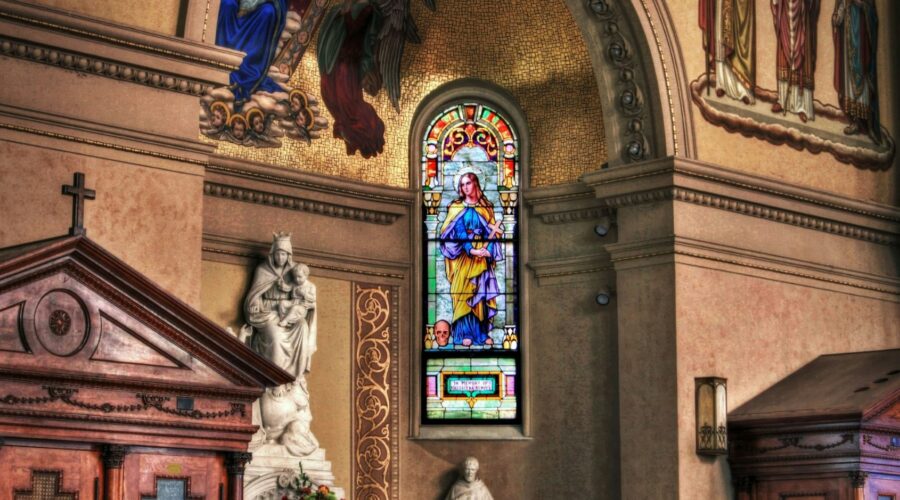
Experience Spiritual Revival and Empowerment with TDJakes Live
Introduction: Unveiling the Essence of TDJakes Live
TDJakes Live is a transformative platform that connects millions of individuals globally with the profound teachings and inspiring guidance of world-renowned spiritual leader, Bishop T.D. Jakes. Through captivating sermons, intimate fireside chats, and insightful discussions, TDJakes Live empowers individuals to delve into their spiritual journeys, cultivate personal growth, and navigate life’s challenges with grace and purpose.
Delving into the Heart of TDJakes Live
- Sermons: Bishop Jakes delivers thought-provoking and spiritually uplifting sermons that delve into biblical principles, offering practical insights and encouragement to help listeners deepen their faith and live more fulfilling lives.
- Fireside Chats: Intimate and interactive conversations, fireside chats allow Bishop Jakes to connect with audiences on a personal level, sharing wisdom, insights, and anecdotes from his own life experiences.
- Discussions: Engaging discussions featuring experts and thought leaders explore diverse topics related to spirituality, culture, and personal development, fostering a sense of community and shared exploration.
Unveiling the Impact of TDJakes Live
TDJakes Live has touched the lives of countless individuals around the world, inspiring and empowering them to:
- Deepen Their Faith: Bishop Jakes’ sermons provide a deeper understanding of biblical principles and help strengthen spiritual foundations.
- Overcome Challenges: Through practical teachings and personal anecdotes, TDJakes Live equips individuals with tools to navigate life’s trials and tribulations.
- Foster Personal Growth: Engaging fireside chats and discussions encourage self-reflection, personal growth, and the pursuit of a meaningful life path.
- Cultivate Community: TDJakes Live creates a virtual community where individuals can connect, share experiences, and find support.
Connecting with TDJakes Live
To embark on your transformative journey with TDJakes Live, explore the following options:
- Website: Visit www.tdjakeslive.com to access sermons, fireside chats, and discussion archives.
- Mobile App: Download the TDJakes Live app for convenient access to all content on your mobile device.
- Social Media: Connect with TDJakes Live on Facebook, Twitter, and Instagram for daily inspiration and updates.
Empowering Yourself through TDJakes Live
- Live Stream Events: Experience the power of live stream events with Bishop Jakes, featuring special guests and opportunities for Q&A.
- Membership Options: Consider membership to unlock exclusive content, live chats with Bishop Jakes, and access to a vibrant community of like-minded individuals.
- Mentorship Programs: Explore mentorship programs designed to provide personalized guidance and support on your spiritual path.
Conclusion: Embracing Transformation with TDJakes Live
TDJakes Live is an extraordinary platform that empowers individuals to unlock their spiritual potential, cultivate personal growth, and navigate life’s challenges with purpose and resilience. Through inspiring sermons, intimate fireside chats, and thought-provoking discussions, Bishop T.D. Jakes guides you on a transformative journey, helping you discover the fullness of your faith and live a life of meaning and fulfillment. Join the global TDJakes Live community today and embark on your own extraordinary journey of spiritual awakening and personal empowerment.
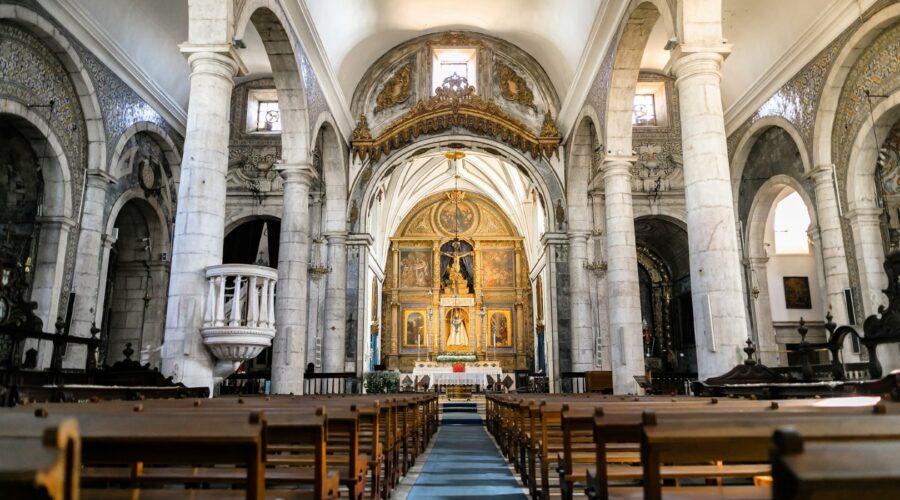
Embracing the Sacrament of Christian Baptism: A Comprehensive Guide
Understanding the Significance of Baptism
Baptism is a pivotal sacrament in Christianity, symbolizing a person’s initiation into the faith and their commitment to follow Jesus Christ. It represents a spiritual rebirth and a cleansing from sin, marking the beginning of a new life in Christ.
The act of baptism involves immersing the person in water, typically in the name of the Father, the Son, and the Holy Spirit. This act signifies purification, renewal, and becoming a part of the Christian community.
Different Forms of Baptism
Infant Baptism
Infant baptism is the practice of baptizing young children, even before they can understand or comprehend the meaning of the sacrament. This form is based on the belief that baptism is a gift of God’s grace and can be received by individuals regardless of their age.
Believer’s Baptism
Believer’s baptism, also known as adult baptism, is performed on individuals who have made a conscious decision to follow Christ. This form emphasizes the importance of personal faith and understanding of the significance of baptism.
It typically involves an immersion of the entire body in water and is preceded by a profession of faith and repentance.
Baptism’s Theological Basis
New Testament Foundations
The New Testament provides ample support for the practice of baptism. Jesus Christ himself was baptized by John the Baptist (Matthew 3:13-17). He later commissioned his disciples to “make disciples of all nations, baptizing them in the name of the Father and of the Son and of the Holy Spirit” (Matthew 28:19).
Pauline Perspectives
The apostle Paul saw baptism as an essential part of the Christian experience. He taught that through baptism, believers are “buried with Christ” and raised to new life (Romans 6:4). He also emphasized that baptism signifies being “washed clean from our sins” and becoming part of the body of Christ (1 Corinthians 12:13).
Practical Aspects of Baptism
Who Can Perform Baptism?
In most Christian denominations, baptism can be performed by ordained ministers, priests, or deacons. However, there are some traditions where lay leaders or even individual believers can perform baptism.
Age Requirements
The age requirements for baptism vary depending on the specific denomination and whether infant or believer’s baptism is practiced.
Preparation for Baptism
For believer’s baptism, individuals typically undergo a period of preparation and instruction known as catechism or baptism class. This time is dedicated to learning about the faith, the meaning of baptism, and the responsibilities of Christian living.
Benefits and Implications of Baptism
Spiritual Cleansing
Baptism represents the washing away of sins and a spiritual cleansing. It signifies a person’s commitment to turn away from sin and embrace a life of holiness and righteousness.
Union with Christ
Through baptism, believers are united with Jesus Christ in his death and resurrection. They become members of his body, the church, and are granted access to his grace and salvation.
New Life in the Spirit
Baptism symbolizes a new beginning, a fresh start in life. It empowers individuals with the power of the Holy Spirit to live a life in accordance with God’s will and experience the joy and peace of the Christian faith.
Frequently Asked Questions (FAQs)
- Can I be baptized more than once? Generally, Christians believe that baptism is a one-time sacrament that establishes a permanent relationship with God.
- What if I was baptized in a different denomination? Most Christian denominations recognize the validity of baptisms performed in other denominations, regardless of the specific form.
- Is it necessary to be baptized to be a Christian? While baptism is a significant sacrament, it is not strictly necessary for salvation. However, it is seen as a public expression of faith and a commitment to follow Christ.
Conclusion
Christian baptism is a profound and meaningful sacrament that symbolizes spiritual renewal, union with Christ, and a new life in the Spirit. Whether infant or believer’s baptism, this act of faith marks a significant milestone in the Christian journey. By understanding its significance, undergoing proper preparation, and embracing its implications, individuals can experience the transformative power of baptism and deepen their connection with God.
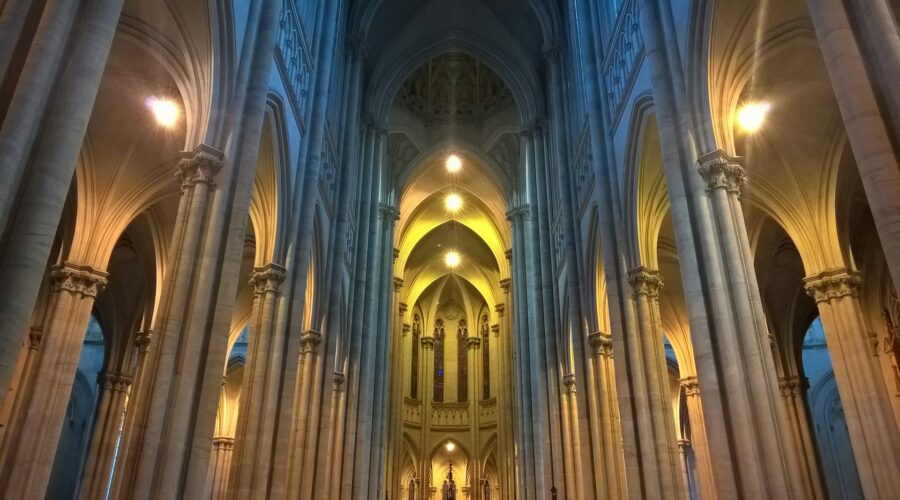
Christ Church Cathedral: A Majestic Symbol of Dublin’s History and Culture
Introduction
Christ Church Cathedral, nestled in the heart of Dublin, Ireland, is an architectural masterpiece that has stood as a testament to faith, history, and culture for over a millennium. Its imposing presence and intricate details have made it not only a spiritual sanctuary but also a cherished landmark that attracts visitors from around the globe.
History and Architecture
Early Origins
The origins of Christ Church Cathedral can be traced back to the 11th century when the Viking king Sitric Silkenbeard converted to Christianity and founded a church on the site. The cathedral has undergone numerous renovations and expansions over the centuries, reflecting Dublin’s changing architectural styles.
Norman Influence
In the 12th century, the Normans conquered Ireland and significantly altered the cathedral’s structure. They extended the nave, added a transept, and built a new chancel. The Norman influence is evident in the cathedral’s arched doorways, vaulted ceilings, and sturdy columns.
Gothic Additions
During the 14th and 15th centuries, the cathedral underwent further Gothic renovations, including the addition of flying buttresses, pointed arches, and stained-glass windows. The Lady Chapel, built in the 15th century, is a particularly exquisite example of Gothic architecture, with its delicate tracery and vaulted ceiling.
Interior Treasures
The Crypt
One of the most fascinating features of Christ Church Cathedral is its crypt, which houses a collection of medieval artifacts and exhibits. Visitors can explore the remains of the original Viking church, marvel at the 12th-century carvings, and learn about the cathedral’s rich history.
The Treasury
The cathedral’s treasury houses an impressive collection of ecclesiastical artifacts, including the Crozier of St. Kevin, believed to have been used by the patron saint of Dublin in the 6th century. Visitors can also admire the 11th-century Dublin Penny, the oldest known Irish coin.
The Great Organ
Installed in 1690, the Great Organ is a masterpiece of musical craftsmanship. With its 5000 pipes and 82 stops, it is one of the largest and most renowned organs in Ireland. Visitors can attend recitals and concerts to experience the organ’s impressive sound.
Cultural Significance
Religious Symbol
Christ Church Cathedral has served as a place of worship for centuries and continues to be a vibrant center of the Church of Ireland. The cathedral hosts daily services, choral performances, and special events that draw a diverse congregation.
Historical Landmark
Beyond its religious significance, Christ Church Cathedral is a treasure trove of historical information. Its walls bear witness to Dublin’s medieval, Viking, and Norman past. Visitors can explore the cathedral’s archaeological remains, read historical inscriptions, and learn about the key events that have shaped Ireland’s history.
Cultural Center
Christ Church Cathedral is not just a religious or historical site; it also serves as a cultural hub in Dublin. The cathedral hosts a variety of events throughout the year, including concerts, exhibitions, and lectures. It also offers guided tours that provide an in-depth exploration of the cathedral’s history, architecture, and cultural significance.
Planning Your Visit
Admission Information
Christ Church Cathedral is open to the public for self-guided or guided tours. Admission prices vary depending on the type of tour and the time of year. Visitors are encouraged to check the official website for the most up-to-date information.
Getting There
Christ Church Cathedral is conveniently located in the heart of Dublin, adjacent to Christchurch Place. It is easily accessible by public transportation, such as the Dublin Bus and the Luas tram. Visitors can also drive and park in the nearby streets.
Tips for Visitors
*
- Book a guided tour to gain insights into the cathedral’s history and architecture.
*
- Attend a choral performance or organ recital to experience the cathedral’s magnificent acoustics.
*
- Explore the crypt and treasury to discover the hidden treasures of Christ Church.
*
- Take your time to admire the intricate details of the cathedral’s interior and exterior.
*
- Respect the cathedral as an active place of worship, and observe silence during services.
Conclusion
Christ Church Cathedral is an architectural masterpiece, a spiritual sanctuary, and a cultural treasure that embodies the rich history of Dublin. Its stunning architecture, captivating interior, and cultural significance make it a must-visit destination for anyone interested in exploring Ireland’s past and present. Whether you seek a place of worship, a historical landmark, or a cultural experience, Christ Church Cathedral will undoubtedly leave a lasting impression.